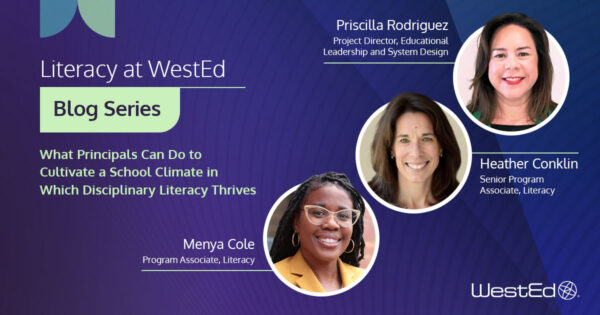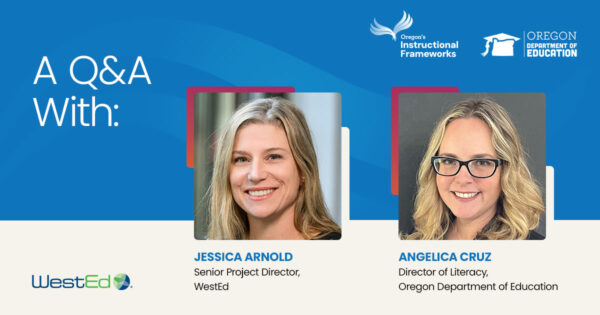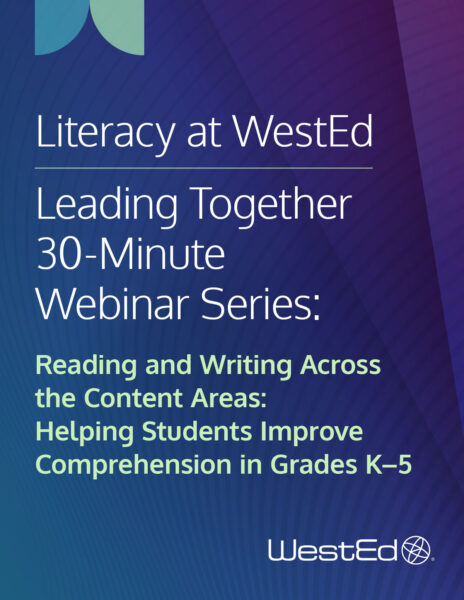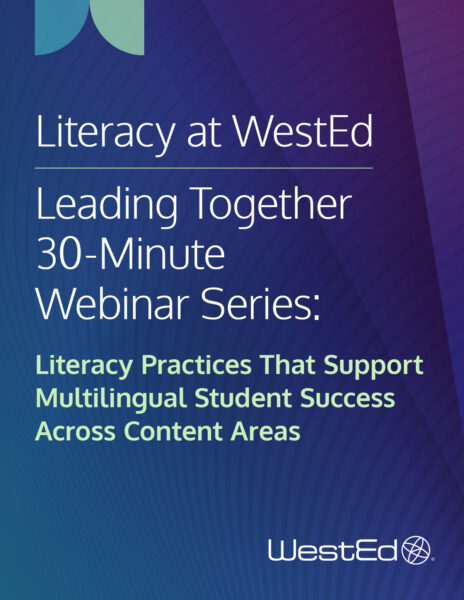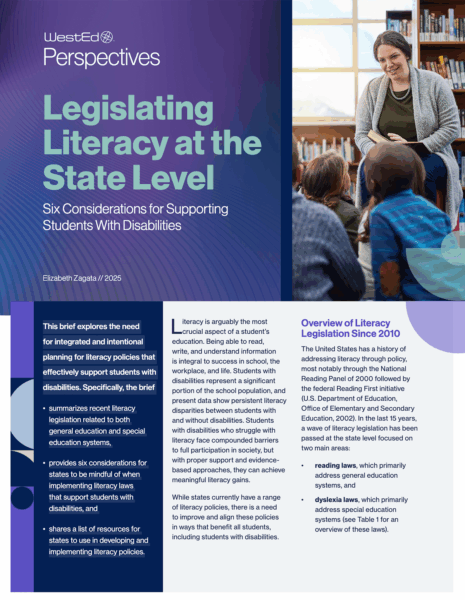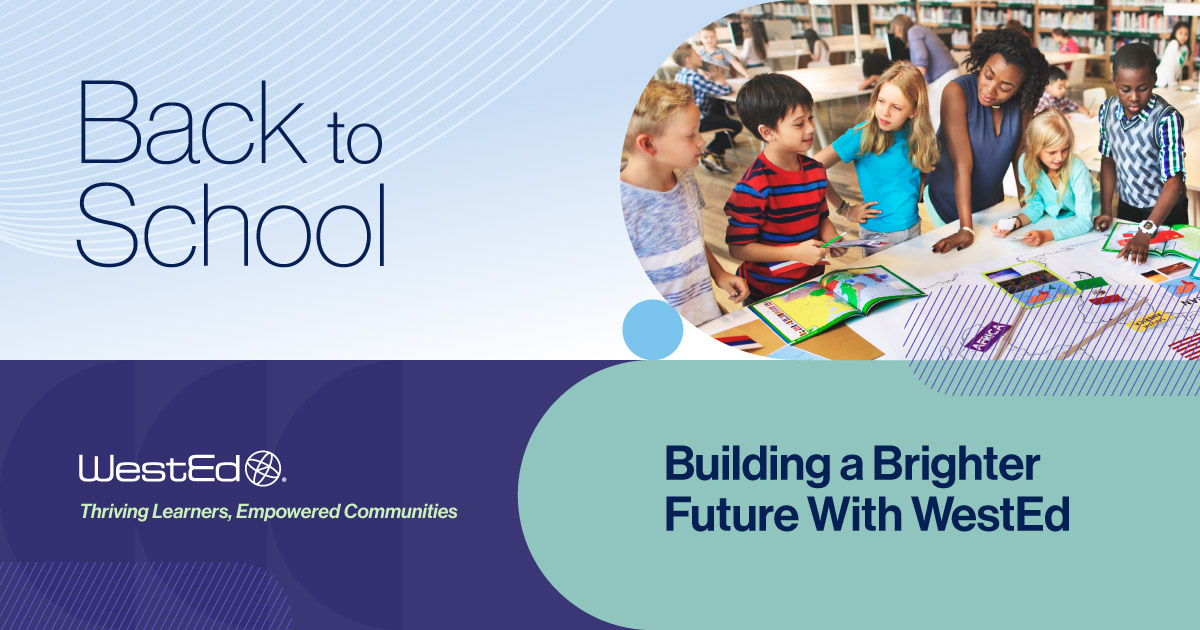
August 27, 2025
As teachers and students return to classrooms, school and district leaders work to address challenges across all grade levels and subject areas. Recent findings from the NAEP (or the Nation’s Report Card) suggest that many students need more support to become strong, independent readers and writers, skills that are essential for success in school and the workforce.
This special Back-to-School Spotlight shares three strategies that education leaders can use to improve literacy outcomes for all learners: partnering with families, incorporating disciplinary literacy practices in classrooms, and providing effective professional development for teachers and administrators.
Be sure to check out the resources in our special curated Back-to-School Collection.
Work With Families to Develop Early Literacy
In Why Family Engagement Matters for Literacy Success, family engagement expert Maria Paredes describes how literacy begins at home:
“Families lay the foundation—sometimes intentionally, sometimes through everyday routines—by exposing children to storytelling, songs, reading for enjoyment, and meaningful conversations, all of which foster a rich environment for literacy development. Schools can build on these strengths by connecting family practices with classroom instruction so that students see literacy as a fluid and collaborative effort.”
Paredes says that one of the best ways schools can do this is by providing teachers with tools they can share with families, such as two new resources that teachers can use to support early literacy.
The resources feature clear visual milestones and accessible strategies and provide families with a roadmap to understand what literacy learning entails at each stage. With a shared language and practical tools, these tools enhance communication between home and school, empowering families to actively support their child’s literacy journey.
Download the tool for PreK–3 and for Grades 4–8 to review and share with families. Also available in Spanish: PreK–3 and Grades 4–8.
Integrate Disciplinary Literacy Practices Into Classrooms
One of our ongoing blog series explores the concept of disciplinary literacy—the distinct ways of reading, writing, and communicating across academic fields such as science, history, math, and literature. Featuring actionable insights from WestEd thought leaders, the series looks at how integrating disciplinary literacy practices into elementary and secondary classrooms can support student success in school, in careers, and throughout their lives.
In Why Disciplinary Literacy Belongs in Elementary Classrooms, Rachel Tripathy describes one benefit of integrating disciplinary literacy:
“Disciplinary literacy offers a solution to the time crunch many feel between literacy instruction and content learning. Studies demonstrate that both literacy achievement and content-area learning benefit when thoughtfully integrated with each other. Instead of choosing between reading time and science time, disciplinary literacy allows teachers to develop both simultaneously.”
Read more insights from this series:
- Supporting Multilingual Learners in Disciplinary Literacy
- What Principals Can Do to Cultivate a School Climate in Which Disciplinary Literacy Thrives
- Beyond the Science of Reading: Why Disciplinary Literacy Matters for College and Workforce Readiness
- Reading, Writing, and Communicating in STEMM: Preparing Students for the Future
Also, check out these upcoming and recent 30-minute literacy webinars.
Aligning Leadership, Literacy Instruction, and Professional Learning
Often, what is needed for students’ reading and writing skills is professional development for both teachers and administrators based on a framework with proven results. This is what the Rich Township High School District did when its leaders determined that Reading Apprenticeship was a match for their district’s teacher and student learning goals. The district identified literacy as a keystone to districtwide improvement and began its work by engaging 9th grade teachers and their administrators in Reading Apprenticeship professional learning.
With an emphasis on disciplinary literacy, Reading Apprenticeship is a professional development model and instructional approach designed to improve literacy for middle school, high school, and college students. Independent studies show that participation in Reading Apprenticeship shifts teacher practice and improves student learning and engagement.
For example, students in the Rich Township High School District 227 showed marked progress in academic language use, text-based dialogue, reading, and writing benchmarks, achieving a 17 percent increase in PSAT 9 scores. In addition, 87 percent of students reached or exceeded expected growth, reflecting enhanced persistence and problem-solving skills with challenging texts.
Key Takeaways
Here are some actions educators can take to improve literacy:
- Leverage what families are already doing and expand on that by providing teachers with tools to support a strong family–literacy connection.
- Create a culture of disciplinary literacy in schools.
- Provide teachers and administrators with ongoing, evidence-based professional development that has been proven to transform teaching and enhance literacy.
Work With Us to Enhance Literacy Instruction and Learning
WestEd collaborates with educators to implement evidence-based reading, writing, and oral language approaches that inform and shape teaching and leadership practices, evaluate policy, and help our partners develop strategic literacy plans that enhance outcomes for all learners.

